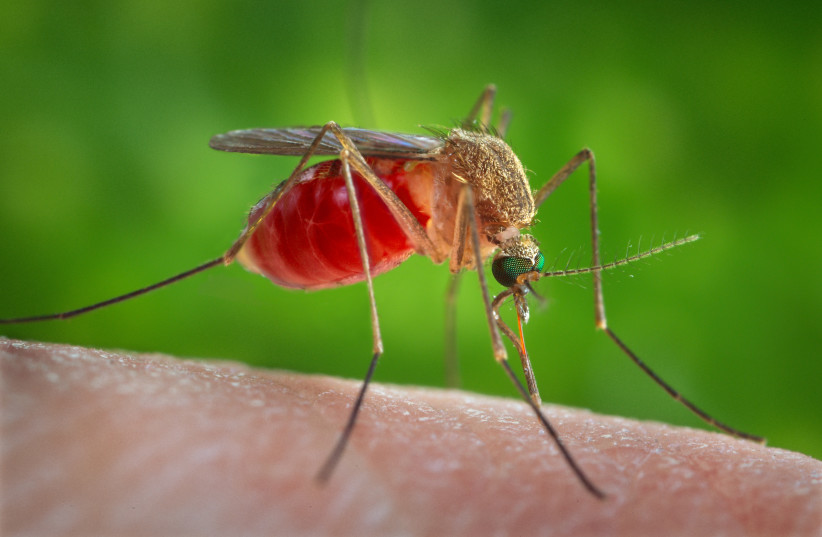As Israel is a crossroads for many millions of migratory birds flying from continents to the south and the north and back, it is – along with other countries of the Middle East and West Asia much of Africa, parts of Europe and Australia, Canada, Venezuela, and the US – at risk for the West Nile virus (WNV) infection.
Outbreak areas with the largest outbreaks have occurred in Greece, Israel, Russia, Romania, and the US due to migratory bird routes.
How the virus is transmitted and its effects
West Nile fever is caused by a virus primarily present in birds and transferred to humans through mosquito bites. Those infected typically experience flu-like symptoms including headaches, fever, weakness, joint and muscle aches, conjunctivitis, rashes, and sometimes even nausea and diarrhea.
It's usually a very mild influenza-like disease that resolves by itself. The incubation period between the mosquito bite from an infected bird or fowl and the development of symptoms is five to 21 days, and the fever usually lasts for three to six days.

The Health Ministry in Jerusalem reported that last year, around a dozen Israelis had been infected here with WNV, and two of them died. A small share of patients may progress to brain infection, which can result in paralysis, brain damage, and death.
The virus is most active in Israel from the middle of August till the middle of October. As there is no vaccine against it, protecting yourself from mosquito bites is therefore very important to reduce the risk of infection.
How to prevent yourself from getting the virus
Preventive measures are important at dusk and dawn (sunset to sunrise) during mosquito activity. To reduce the mosquito risk, wear long clothes, install fly screens on windows; and use fans to keep the mosquitoes out. Chemicals such as mosquito repellents can be applied on the skin, and there are electric devices that attract and trap mosquitoes; some release a mosquito repellent spray into the air.
A new international study led by scientists from the University of Edinburgh in Scotland found that the spread of WNV is strongly linked to agricultural activities, urbanization, and bird migration. It has just been published in the PLOS journal under the title “West Nile virus spread in Europe: phylogeographic pattern analysis and key drivers.”
Prof. Lu Lu and collaborators belonging to a large European collaborative consortium gathered data over the past two decades from virus genomes, epidemiology studies, and environmental surveys to generate a series of models that could simulate WNV patterns across European geography.
The authors found that one specific sub-lineage of the virus only found in Europe, WNV-2a, accounts for almost 75% of all European instances of the virus currently known and has spread to at least 14 countries.
The speed and direction of WNV-2a’s spread were strongly correlated to agricultural activity, possibly because agricultural land use can degrade natural habitat for birds and force new migration patterns, potentially allowing the spread of WNV to new areas, while simultaneously creating new aquatic habitat for mosquito breeding.
The direction of WNV-2a’s spread was also associated with urbanization, high coverage of wetlands, and migratory bird movements. The mosquito species and virus vectors are known to prefer urban environments due to the high availability of artificial aquatic habitats, fewer natural predators, and warmer ambient temperatures.
The authors note some significant gaps in available data from across Europe. The study points at a clear priority for enhanced surveillance in Central Europe, which may be a source for dissemination of West Nile virus across Europe. They also recommend stronger monitoring for West Nile virus in areas at high risk due to agriculture and/or bird habitat.
